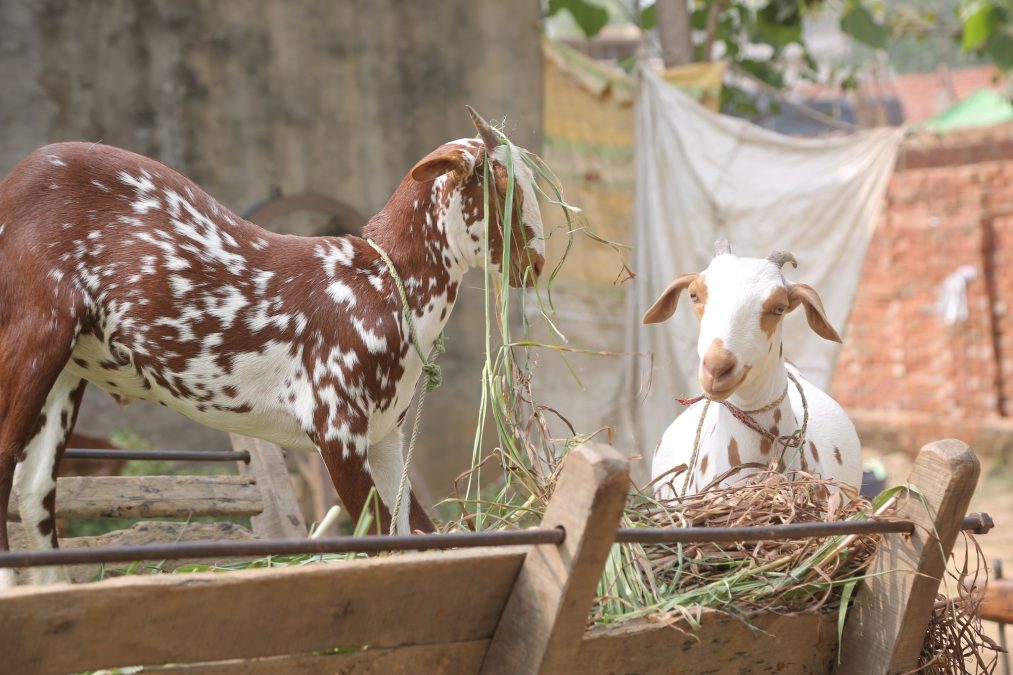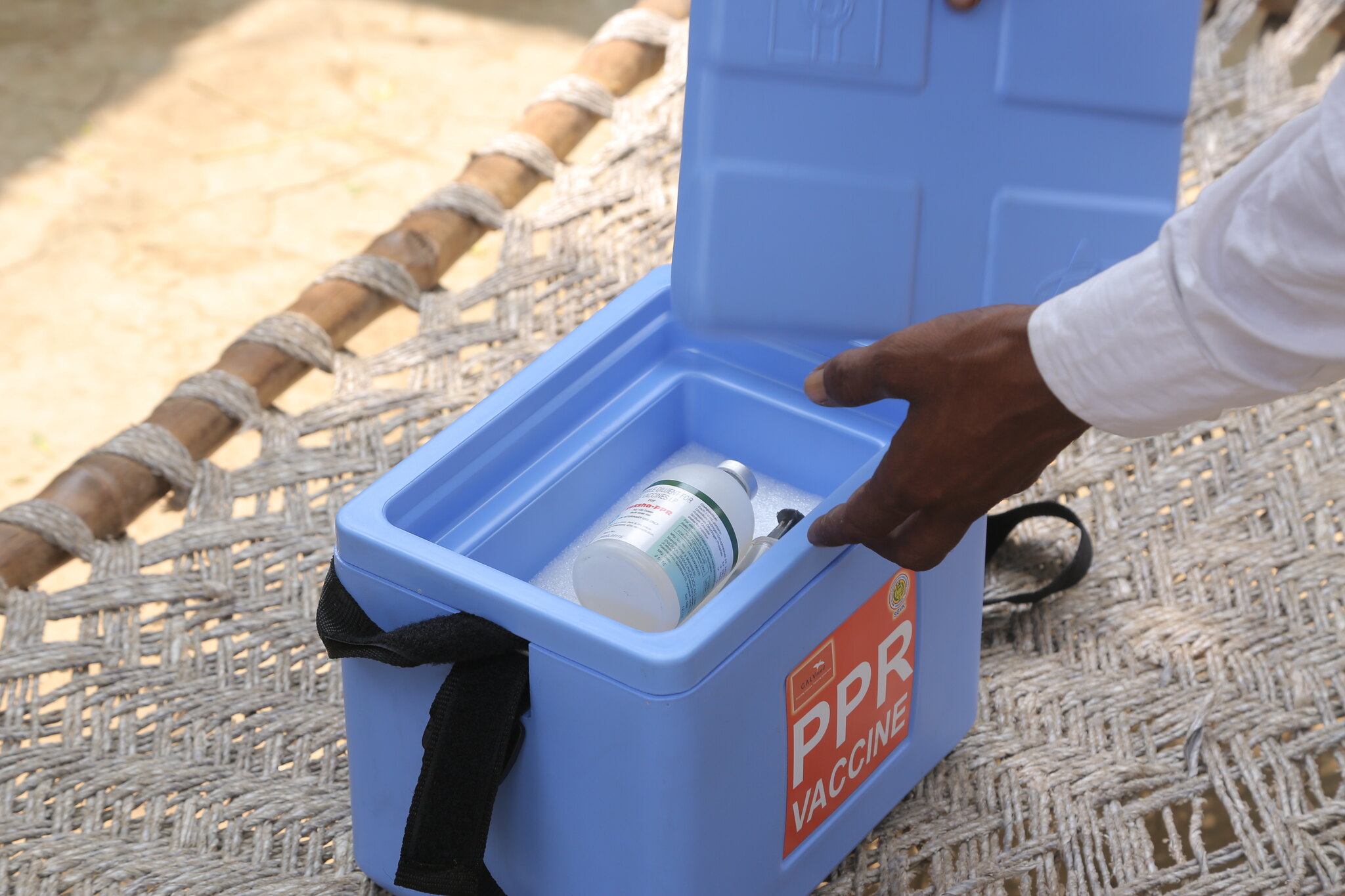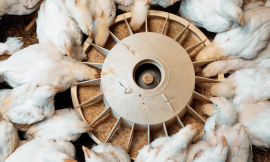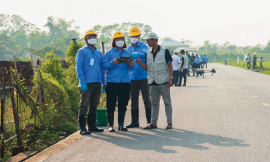Imagine that over the course of 10 days, 80 per cent of your livelihood is destroyed. This is a reality for millions of small-scale producers in Africa who depend on sheep and goats for income, nutrition and survival, but have to contend with Peste des Petits Ruminants (PPR), a highly contagious disease with a mortality rate of up to 90 per cent.
Despite being the target of a global eradication campaign, PPR continues to threaten sustainable development, food security and poverty reduction efforts with its rapid spread across borders. Recent outbreaks in Europe demonstrate that no country is free from the risk of PPR.
In our interconnected world, nowhere is safe until everywhere is safe. Eradicating PPR could deliver billions in economic gains, alongside improved nutrition, health and education outcomes. But achieving its global eradication hinges on one key factor: ensuring more vaccines reach the owners of small ruminant livestock who need them.
PPR threatens rural livelihoods, but solutions exist
PPR impacts more than 300 million farming households each year, particularly in low-income countries where small ruminants are the backbone of rural livelihoods. Women and young people, who often manage these animals, suffer the most when outbreaks occur. The loss of sheep and goats not only strips families of a vital food source but also affects household income, children’s education and community resilience.

The disease is endemic in large parts of Africa, the Middle East and Asia, but Southern Africa remains at a tipping point. Five countries in the region are still PPR-free, yet the disease is spreading southwards and now poses a real threat to uninfected areas.
Without urgent and coordinated action, the disease risks spreading further, potentially reversing decades of progress in poverty alleviation, starting with the regions where small ruminants play a key role in food systems.
What makes the increasing spread of PPR frustrating is that high-quality vaccines that could prevent the disease exist. These vaccines offer lifelong immunity against all PPR strains and are considered one of the most reliable tools available for eradication. Yet vaccination coverage remains dangerously low across much of Africa.
In Uganda, for example, at least half of the districts are currently at risk of PPR outbreaks, putting the country’s 18 million small ruminants, most of which remain unvaccinated, in danger. Low disease awareness, high vaccine costs, inadequate veterinary infrastructure and limited animal identification systems continue to hinder large-scale livestock vaccination. Overcoming these barriers requires not just better vaccine availability but also stronger delivery systems that can reach the most remote farmers.
Why accelerating access to vaccines is crucial
Multiple European countries are now contending with PPR, thought to have spread from Africa. This is a stark reminder that global health security starts with controlling diseases at their source.
Healthy animals in Africa safeguard livelihoods locally while also protecting food security and international trade. To keep small ruminants healthy in the region, vaccine access must improve rapidly, supported by sustained investment and coordinated action.
A key step every African country must take is ensuring that affordable and accessible vaccines reach small-scale producers. GALVmed’s VITAL programme is helping to bridge this gap by supporting the development and distribution of combination vaccines, such as those targeting PPR, contagious caprine pleuropneumonia (CCPP) and sheep and goat pox (SGP).
These farmer-friendly vaccines are designed to be more cost-effective, requiring a single administration to protect against multiple diseases. Morocco’s success in using them to control outbreaks of both PPR and sheep pox demonstrates how such innovations can make vaccination campaigns more efficient while reducing long-term costs.

Regulatory systems also need to move faster. Despite the availability of effective vaccines against PPR, delays in licensing and registration across African markets slow down access. GALVmed and its partners have secured several product approvals, but greater regulatory harmonisation is essential to ensure new vaccines can reach farmers without unnecessary delays.
Finally, expanding vaccination coverage requires bridging the “last mile” to reach remote farming communities. Public-private partnerships have proven highly effective here. Boehringer Ingelheim’s LastMile initiative, for example, has trained animal health technicians, increased veterinary medicine registrations by 86 per cent and reached tens of thousands of small-scale producers across six African countries.
In Mali, trials of the LYOPOX-PPR combination vaccine have vaccinated over 95,000 small ruminants, empowering farmers to proactively manage livestock health rather than respond reactively after outbreaks. By combining innovation, regulatory reform and effective delivery systems, Africa can accelerate vaccine access and build stronger, more resilient animal health systems capable of tackling PPR at its roots.
Investing today protects everyone tomorrow
History shows that stopping devastating livestock diseases is possible. Rinderpest, a similarly contagious cattle disease, was declared eradicated in 2011 after a coordinated global campaign aimed at stopping its spread.
PPR could be next. We have the tools we need to consign it to history. GALVmed’s development of new combination vaccines and successful country-led vaccination campaigns, from Morocco to Mali, show that investment and political will exist to achieve PPR eradication.
Now, investment should be scaled to take these solutions from pilot to widespread coverage, which would be both an act of solidarity and a shield for the rest of the world. If we act decisively, we can protect livelihoods in Africa, prevent the disease from spreading further in Africa and across Europe, and unlock lasting economic and social benefits for millions of families.
Header photo credits: GALVmed/Flickr





